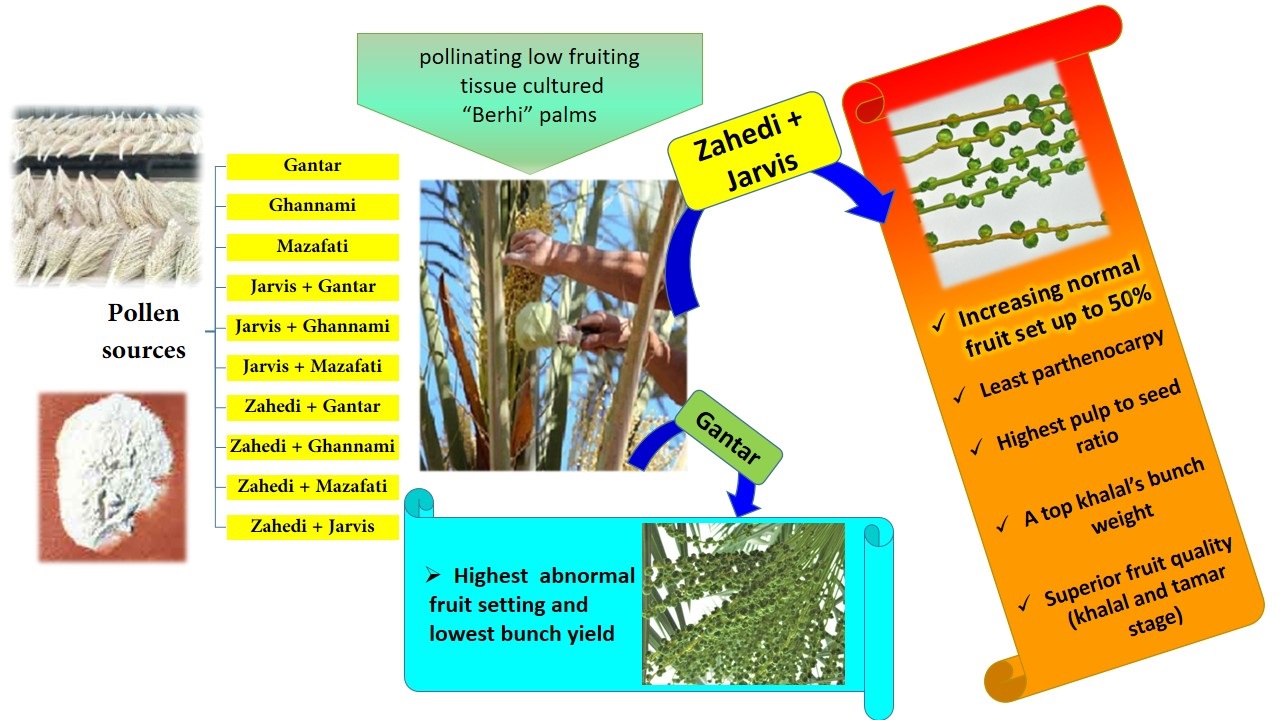Improving fruit set and yield of tissue cultured date palm cv. Berhi by using a combined pollination technique

Published 2023-02-21
Keywords
- Abnormal fruit set,
- metaxenia,
- parthenocarpic fruits,
- Phoenix dactylifera L.,
- pollen source
How to Cite
Copyright (c) 2023 Sasan Rastgoo, Fatemeh Bemani, Hamidreza Nooryazdan, Mahmood Izadi

This work is licensed under a Creative Commons Attribution 4.0 International License.
Abstract
Tissue-cultured (TC) date palms produce no fruit or low yield due to abnormal fruit setting. To improve the yield of TC ‘Berhi’ palms, trees were pollinated using five pollen sources (Gantar, Ghannami, Mazafati, Zahedi, and Jarvis). The experiment was carried out in three replications for two successive years in a randomized complete blocks design. The fruit set, the fruit and seed physical traits at the Khalal stage, bunch weight at the Tamar and Khalal stages, ripeness of Tamar bunch, and the fruit quality at both Khalal and Tamar stages were measured and monitored. Year factor significantly affected the fruit set and the fruit and seed characteristics. Pollen sources affected fruit set and some seed characteristics significantly. Zahedi+Jarvis pollen treatment that induced 50% normal fruit set and the highest ratio of pulp to seed was found superior. It was also a top treatment in Khalal’s bunch weight (3.11 Kg). Zahedi+Gantar treatment was realized superior in Tamar’s bunch weight (6.00 Kg). Ghannami, Jarvis+Ghannami, and Zahedi+Jarvis treatments produced Khalal’s fruits with higher quality indices but Zahedi+Jarvis treatment was superior in fruit quality at the Tamar stage. Overall, the combined application of Zahedi and Jarvis pollens yielded the most desired outcomes.




